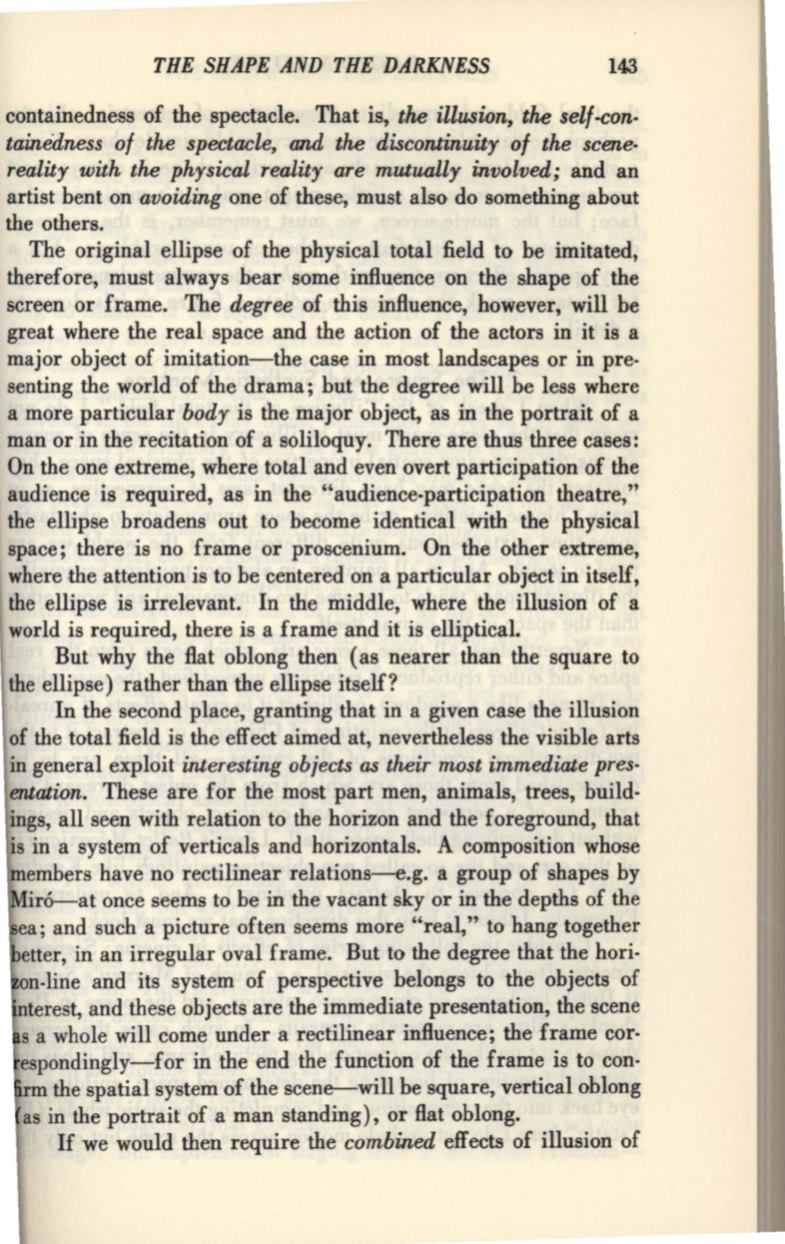
THE SHAPE AND THE DARKNESS
143
containedness of the spectacle. That is,
the illusion, the self-con–
tainedness of the spectacle,
li1Ui,
the discontinuity of the scene–
reality with the physical reality are mutually involved;
and an
artist bent on
avoiding
one of these, must also do something about
the others.
The original ellipse of the physical total field to be imitated,
therefore, must always bear some influence on the shape of the
screen or frame. The
degree
of this influence, however, will be
great where the real space and the action of the actors in it is a
major object of imitation-the case in most landscapes or in pre–
senting the world of the drama; but the degree will be less where
a more particular
body
is the major object, as in the portrait of a
man or in the recitation of a soliloquy. There are thus three cases:
On the one extreme, where total and even overt participation of the
audience is required, as in the "audience-participation theatre,"
the ellipse broadens out to become identical with the physical
space; there is no frame or proscenium. On the other extreme,
where the attention is to be centered on a particular object in itself,
the ellipse is irrelevant. In the middle, where the illusion of a
world is required, there is a frame and it is elliptical.
But why the flat oblong then (as nearer than the square to
the ellipse) rather than the ellipse itself?
In the second place, granting that in a given case the illusion
of the total field is the effect aimed at, nevertheless the visible arts
in general exploit
interesting objects as their most immediate pres·
entation.
These are for the most part men, animals, trees, build–
ings, all seen with relation to the horizon and the foreground, that
·s in a system of verticals and horizontals. A composition whose
embers have no rectilinear relations-e.g. a group of shapes by
irO----at once seems to be in the vacant sky or in the depths of the
ea; and such a picture often seems more "real," to hang together
etter, in an irregular oval frame. But to the degree that the hori–
n-line and its system of perspective belongs to the objects of
terest, and these objects are the immediate presentation, the scene
sa whole will come under a rectilinear influence; the frame cor-
espondingly-for in the end the function of the frame is to con–
the spatial system of the scene-will be square, vertical oblong
as in the portrait of a man standing), or flat oblong.
If
we would then require the
combined
effects of illusion of


